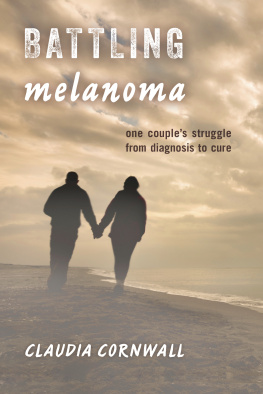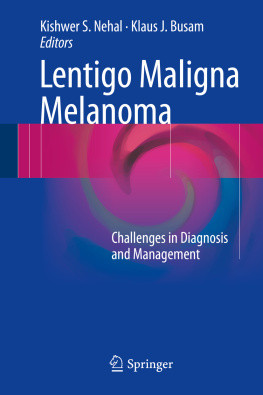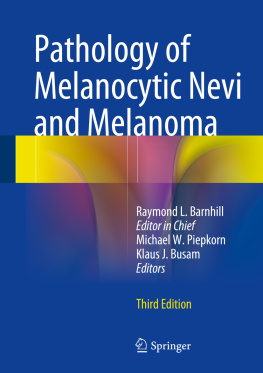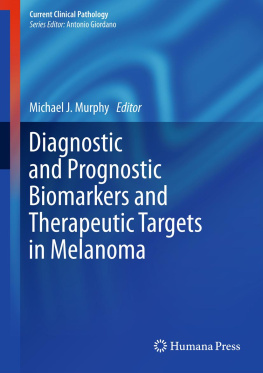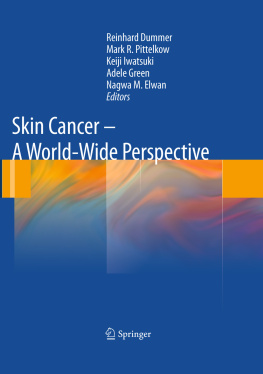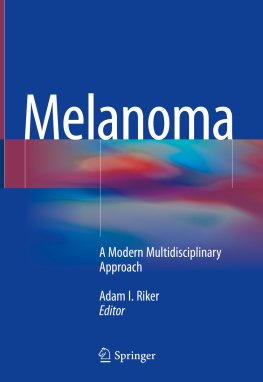Beating Melanoma
A Johns Hopkins Press Health Book
Beating Melanoma
A Five-Step Survival Guide
Steven Q. Wang, M.D.
Memorial Sloan-Kettering Cancer Center

The names of the patients in this book have been changed to safeguard their privacy.
Copyright 2009, 2011 by Steven Q. Wang, M.D.
All rights reserved. Published 2011
Printed in the United States of America on acid-free paper
9 8 7 6 5 4 3 2 1
The Johns Hopkins University Press
2715 North Charles Street
Baltimore, Maryland 21218-4363
www.press.jhu.edu
An earlier version of this book was published on-line as
Beating MelanomaThe Survival Manual:
A 5-Step Guide for Patients with Melanoma.
Library of Congress Cataloging-in-Publication Data
Wang, Steven Q.
Beating melanoma : a five-step survival guide / Steven Q. Wang.
p. cm.
A Johns Hopkins Press health book.
Includes index.
ISBN-13: 978-0-8018-9889-1 (hardcover : alk. paper)
ISBN-10: 0-8018-9889-7 (hardcover : alk. paper)
ISBN-13: 978-0-8018-9890-7 (pbk. : alk. paper)
ISBN-10: 0-8018-9890-0 (pbk. : alk. paper)
1. MelanomaPopular works. 2. MelanomaTreatment
Popular works. I. Title.
RC280.M37W35 2011
616.99477dc22 2010025897
A catalog record for this book is available from the British Library.
Special discounts are available for bulk purchases of this book.
For more information, please contact Special Sales at
410-516-6936 or
The Johns Hopkins University Press uses environmentally friendly book materials, including recycled text paper that is composed of at least 30 percent post-consumer waste, whenever possible. All of our book papers are acid-free, and our jackets and covers are printed on paper with recycled content.
The facing page constitutes an extension of this copyright page.
Note to the Reader: The information in this book should by no means be considered a substitute for the advice of qualified medical professionals. Skin cancers have a wide range of appearances and clinical presentations. The descriptions and illustrations of skin cancers provided in this book are examples only. A person may have skin cancers that do not look like or act like any of the examples in this book. If you are worried about any spots, lesions, or moles on your body, you need to seek the consultation of a qualified medical professional. A skin examination with a qualified medical professional is recommended at least once a year. Patients should always consult qualified medical professionals for the diagnosis and treatment of melanoma or other types of skin cancer.
All efforts have been made to ensure the accuracy of the information contained in this book as of the date of publication. The author and the publisher expressly disclaim responsibility for any adverse outcomes arising from the use or application of the information contained herein.
The author and publisher have made reasonable efforts to determine that the selection and dosage of drugs and treatments discussed in this text conform to the practices of the general medical community. The medications described do not necessarily have specific approval by the U.S. Food and Drug Administration for use in the diseases and dosages for which they are recommended. In view of ongoing research, changes in governmental regulations, and the constant flow of information relating to drug therapy and drug reactions, the reader is urged to check the package insert of each drug for any change in indications and dosage and for warnings and precautions. This is particularly important when the recommended agent is a new and/or infrequently used drug.
To my family, for their deep love and support
To Dr. Alfred W. Kopf, Dr. Harold S. Rabinovitz, Dr. David Polsky, Dr. Ashfaq Marghoob, Dr. Allan Halpern, Dr. Leonard H. Goldberg, and Dr. Kishwer Nehal for their continual guidance and support throughout my career
To Dr. Stephen Dusza, Dr. Richard Bezozo, Dr. Christopher Kruse, Dr. David Swanson, and my melanoma patients for their critical reviews of the manuscript
To Jacqueline Wehmueller and Anne Whitmore, my editors, for their professional excellence and for their many valuable suggestions
To Robert Tagliaferro, Melissa Delaney, Carolyn Corigliano, Jacklyn Carney, Brandee Hasko, and the rest of the dedicated dermatology staff at the Memorial Sloan-Kettering Cancer Center in Basking Ridge, New Jersey, who are committed to delivering the highest quality care to melanoma and nonmelanoma skin cancer patients every day
Contents
Preface
The incidence of melanoma has risen dramatically over the past fifty years; more and more people are developing melanoma. It is estimated that in 2009 nearly 69,000 individuals were diagnosed with this skin cancer in the United States and nearly 8,650 people in this country died due to melanoma.
Melanoma can profoundly affect a person on many levels: physically, psychologically, emotionally, and economically. As a dermatologist and skin cancer specialist working at the Memorial Sloan-Kettering Cancer Center, I diagnose, treat, and care for many people with melanoma. I also care for people who are at high risk of developing melanoma. My work brings me into close contact with patients, who share their stories with me. These stories are moving, inspirational, touching, and, sometimes, sad. My interactions with patients have given me a deep appreciation for and understanding of the difficulties and challenges they face, especially in the beginning, when they are first diagnosed with melanoma.
When my patients are first diagnosed, they react with a range of emotions, from surprise, denial, frustration, and confusion to fear and even despair. However, this is not the time to panic. Denial is not an option. You need to take action and take action fast. Certainly, your physician will urge you to undergo treatments as soon as possibleand this urgency is necessarybut some of my patients say that they feel themselves losing control as soon as this process starts.
There is no doubt that you will go through an intense and stressful period from the time of diagnosis to the time when you complete treatment. I call this period the mad rush. Many patients are designed to guide you through this phase.
provides a step-by-step map through the mad rush phase. It will also help you become familiar with the vocabulary of melanoma, the relevant medical background information and basic treatment options, and information about survival outcomes which is tailored to different individuals conditions and the stages of illnesses. Such knowledge can be extremely helpful when you are moving through the mad rush phase.
After successfully completing this phase, many people with melanoma feel a transient relief. At some point after treatment, however, most people who have had melanoma grapple with a fresh wave of questions and nagging concerns. They wonder if they will develop new melanoma or get other skin cancers. They wonder whether they need more treatments. They worry about whether their children and their siblings will also get skin cancer.
With each passing year after treatment, most melanoma survivors gain a deeper understanding of their disease and become more comfortable and reassured. They enter what I call the marathon phase. Information in the second part of this book, , addresses many of your lingering concerns and questions. These chapters will also help you to develop habits and practices that can prevent additional skin cancers.
Next page


